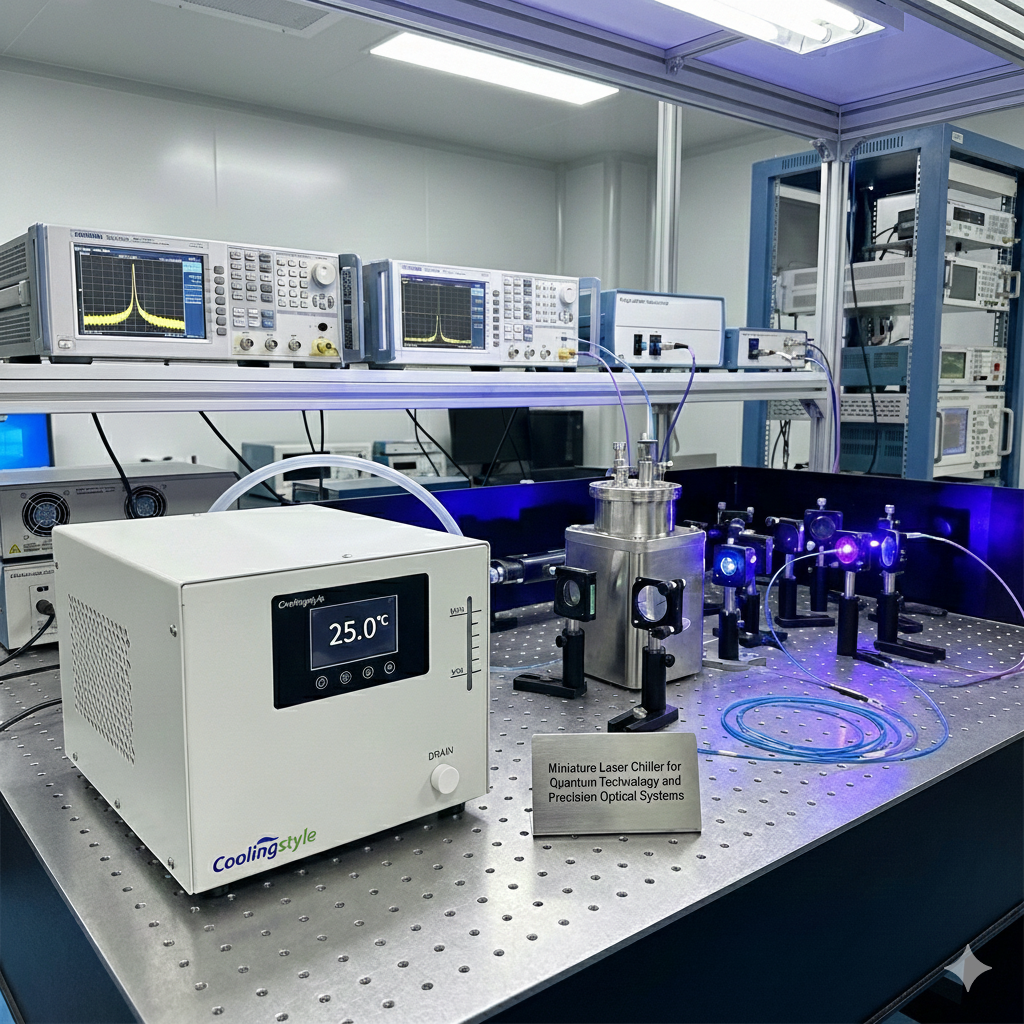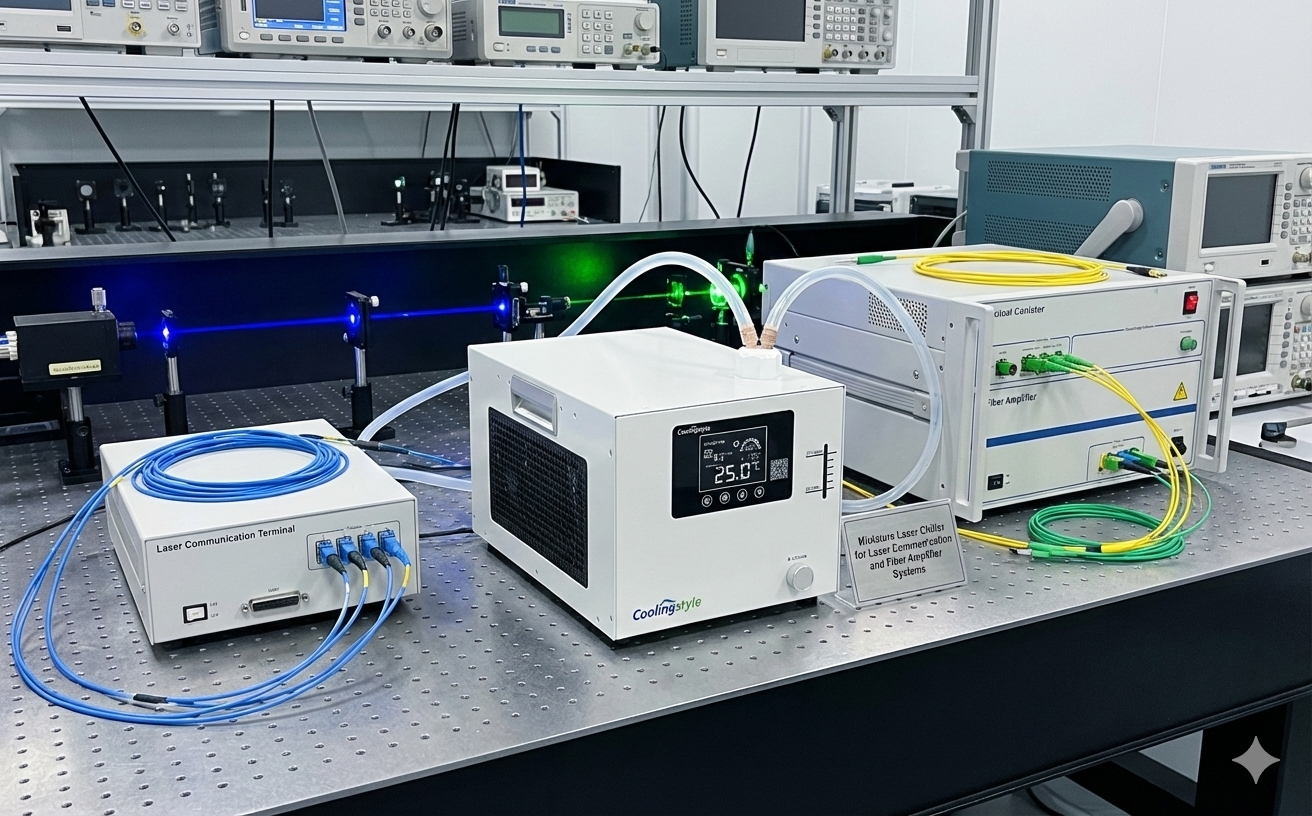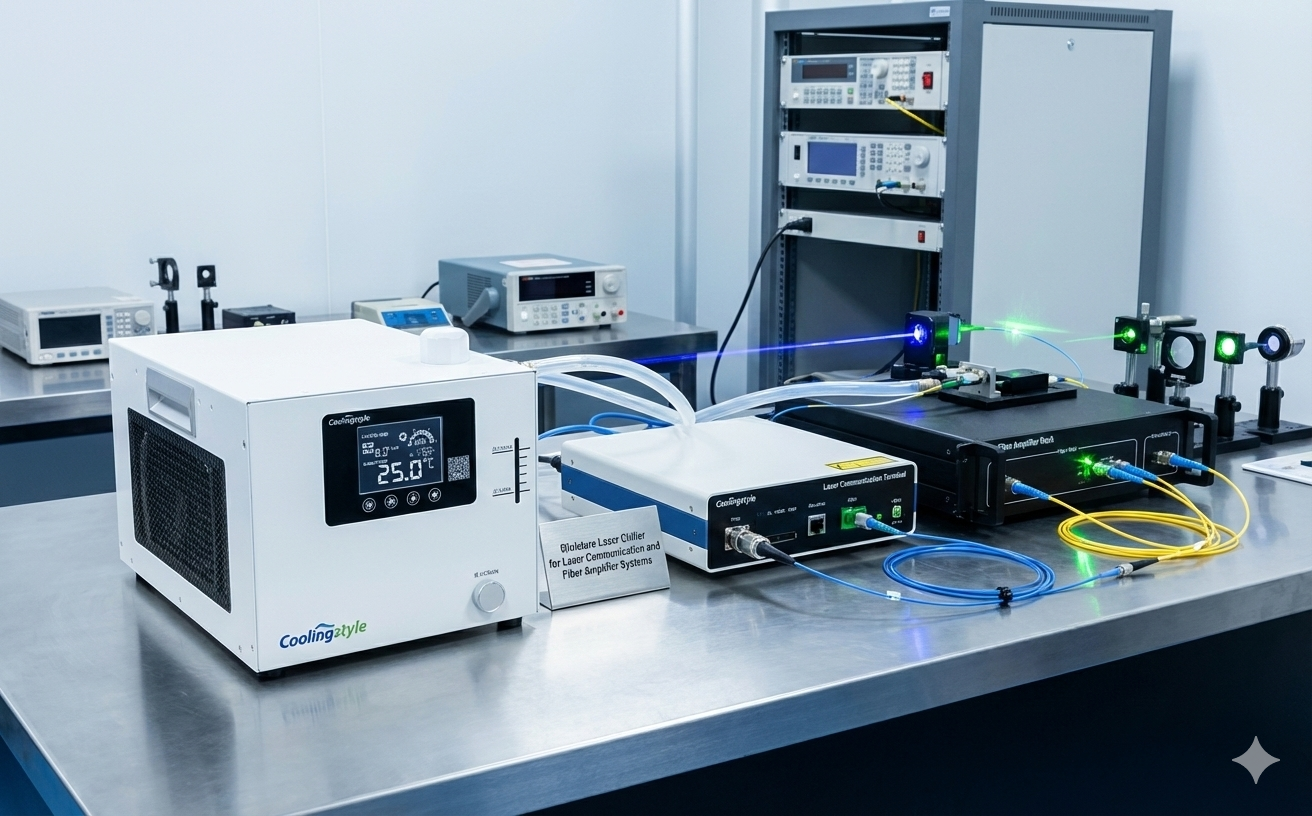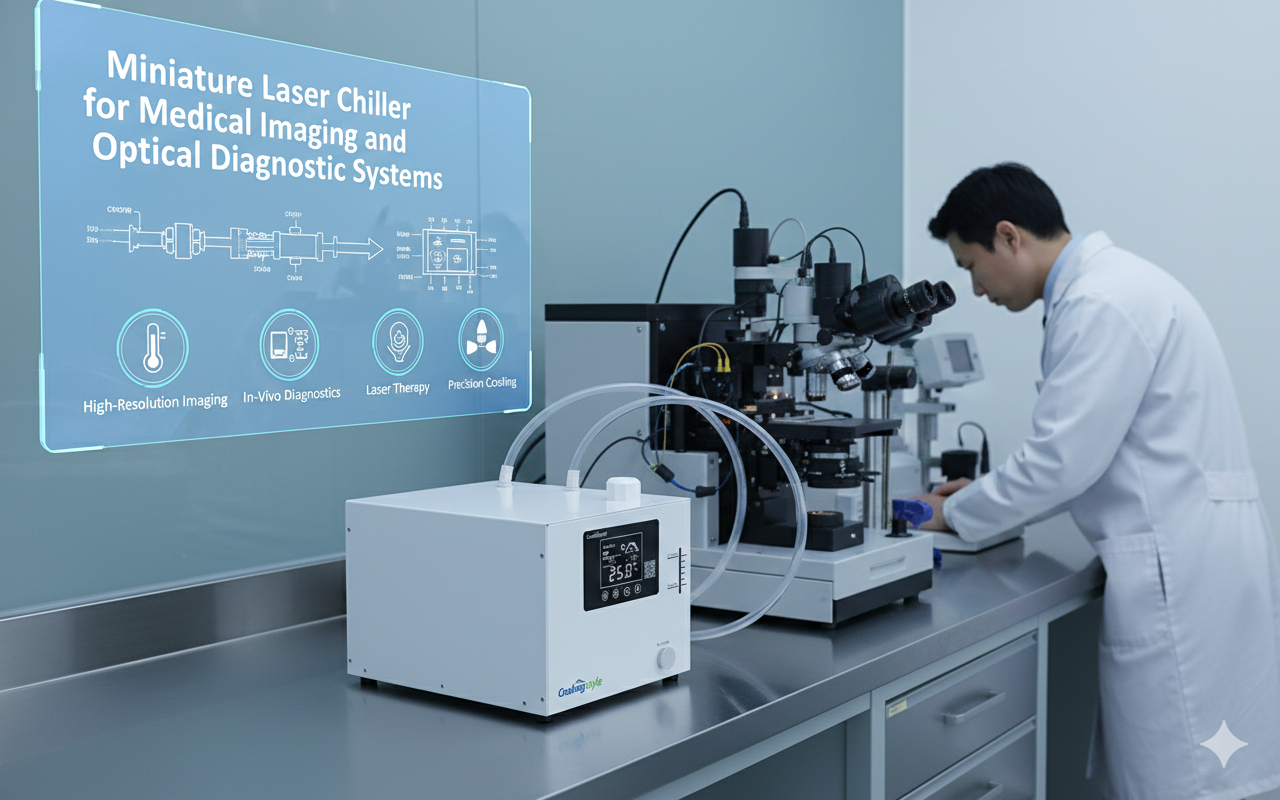As temperatures plummet and snow blankets many regions, chillers face the challenge of operating effectively in freezing conditions. For areas experiencing below-zero temperatures, especially in the north, the question arises: How can you protect your chiller from freezing?
Here, we explore why antifreeze is essential for laser chillers, the types of antifreeze available, and how to choose the right solution.
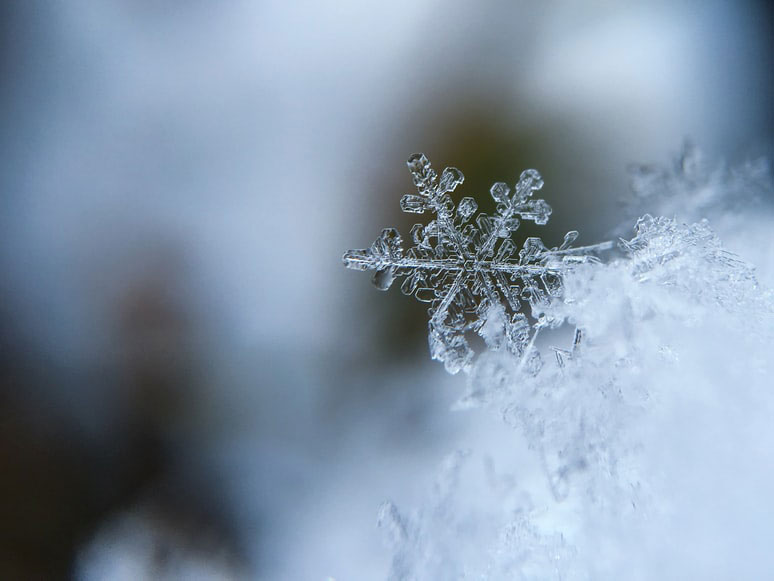
Why Do Laser Chillers Need Antifreeze?
When the ambient temperature drops too low, the circulating cooling water in a chiller’s pipeline may freeze. This can lead to serious damage because:
- Ice Expands: When water freezes, its volume expands, exerting pressure on the chiller’s internal pipelines.
- Pipelines May Burst: Expansion can cause cracks, deformation, or ruptures in the cooling water pipelines, potentially damaging the laser or chiller system.
To prevent these issues, implementing effective antifreeze measures is critical during winter months.

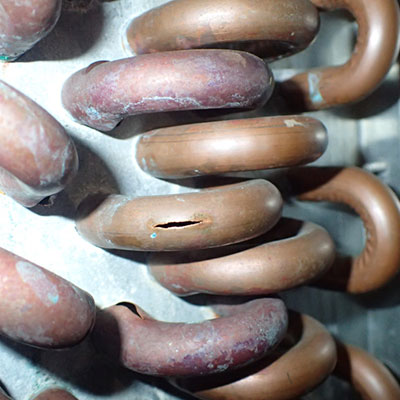
What Is the Antifreeze Solution?
Antifreeze, also known as antifreeze coolant, is a specially formulated liquid that prevents the coolant from freezing at low temperatures. By adding antifreeze to your chiller, you safeguard its internal components against freezing and maintain optimal functionality.
Antifreeze solutions not only lower the freezing point of the coolant but also help prevent damage to the chiller’s pipelines and seals.
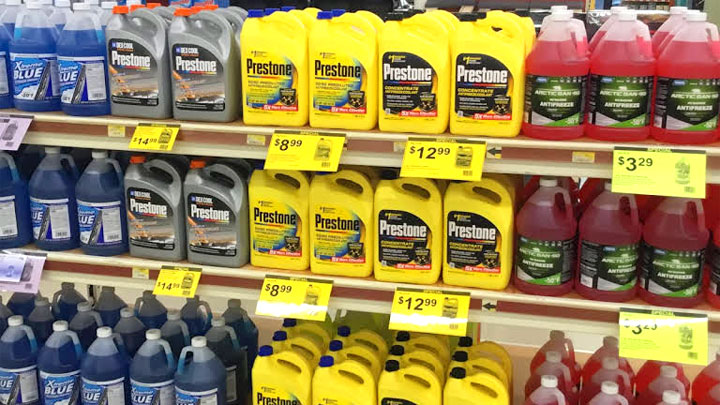
How to Choose the Right Antifreeze Solution
The ideal antifreeze solution depends on the specific requirements of your chiller and laser system. A common choice is an ethylene glycol aqueous solution, widely used for its reliable antifreeze properties. Below, we explain how to choose the right ratio and concentration for effective protection.
Ethylene Glycol Aqueous Solution: Ratios, Concentrations, and Freezing Points
The freezing point of an ethylene glycol solution depends on its concentration. The following table outlines the relationship between glycol concentration, density, and freezing point:
| Concentration (%) | Density (kg/m³) | Freezing Point (°C) |
|---|---|---|
| 10% | ~1010 | -3°C |
| 20% | ~1030 | -8°C |
| 30% | ~1040 | -15°C |
| 40% | ~1055 | -25°C |
| 50% | ~1065 | -35°C |
- Lower Freezing Point: The higher the glycol concentration, the lower the freezing point, offering better protection in extremely cold environments.
- Balance Corrosion Risk: Glycol solutions can be corrosive. Always check your laser system’s compatibility and consider using corrosion inhibitors if necessary.
Key Tips for Choosing and Using Antifreeze
- Consult Your Manufacturer: Always verify with your laser or chiller manufacturer before adding antifreeze. Some systems have specific requirements or restrictions.
- Use the Correct Ratio: Based on your local winter temperatures, choose the right glycol concentration to achieve sufficient freeze protection.
- Prevent Corrosion: If using glycol-based antifreeze, opt for products with corrosion inhibitors to protect the internal components of your chiller.
- Check Compatibility: Ensure the antifreeze is compatible with your chiller and laser system. Some antifreeze solutions may not be suitable for specific models.
- Regular Maintenance: Monitor and replace antifreeze periodically to maintain effectiveness and avoid system contamination.
Final Thoughts
Adding antifreeze to your chiller is a crucial step in protecting it from freezing temperatures. By choosing the right antifreeze solution and maintaining your system properly, you can ensure uninterrupted performance even in the harshest winter conditions. For additional security, always follow the manufacturer’s guidelines and consult professionals when needed.re.
